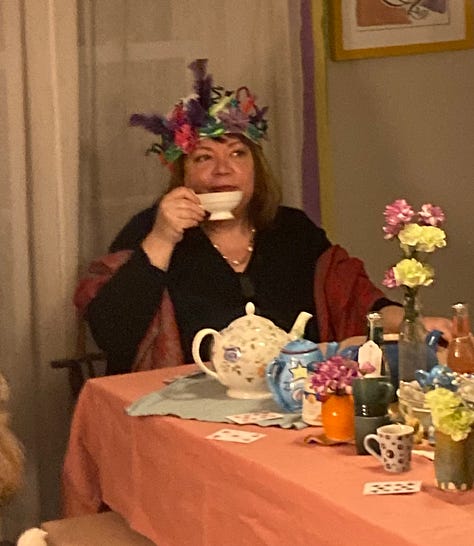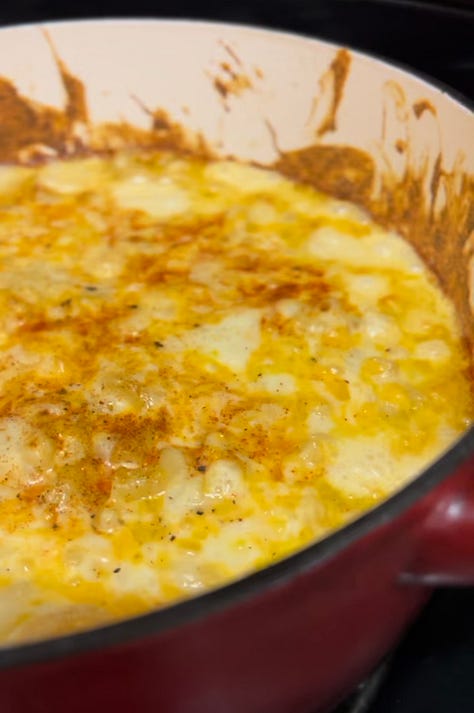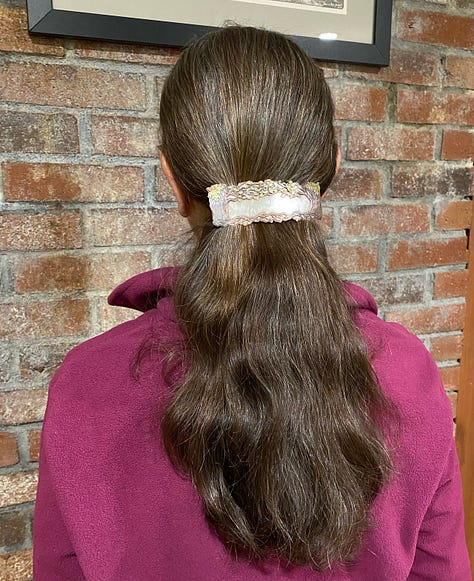A friend from my poetry group sent me a link this morning. She and another friend walk every morning. The piece is beautiful and discusses Nietzsche, Emerson, Thoreau, and many other inveterate walkers. It quotes Frederic Gros, who says “walking is the best way to go more slowly than any other method that has been found.” There is growing literature about the neurobiology of walking, particularly in nature, and its beneficial effects on memory and creativity. I think of my friend who has a house on an Island in Greece. I love to hear about the walks she and her husband take over the hilly paths and along the shore. The only way to get somewhere is by walking. Walking with no real purpose in mind except to walk and maybe ultimately get to some destination.
Another friend gave me the book Flâneuse: Women Walk the City in Paris, New York, Tokyo, Venice, and London by Lauren Elkin, about a woman who walks through the streets of these cities, ambles is more the word, just for the sake of seeing what’s there. Her walks through Paris were the most memorable for me.
On one of her walks she muses about Virginia Woolf, who in my and many others’ opinions, is one of the greatest, freest, and most fascinating writers ever. I love how Woolf writes about the intimate lives of others, like in the dinner party scene in To the Lighthouse, where she focuses on the internal thoughts of the guests, like whether Lily Briscoe will move a tree in her painting from one place to another and the struggle to make the movement, finish her creative work. Lily moves a salt shaker at dinner to remind herself to move the tree. When Virginia Woolf’s father died, she and her sister moved from their “gloomy” childhood home in London to the Bloomsbury section of town where there was room for freedom. Elkins quotes Woolf, “we were going to do without table napkins, we were going to have Bromo instead; we were going to paint; to write; to have coffee after dinner instead of tea at nine o’clock. Everything was going to be different.” And most of all there was the desire for something; all young James wanted, in Woolf’s book of that name, was to go to the lighthouse, a simple pleasure but one that was constantly and aggressively thwarted by his father.
All these are seemingly little things, as is taking a slow walk. It’s all about moving, about having the childlike quality come back, about not being contained by rules, even ones as tiny as using paper towels instead of cloth napkins.
Nietzsche scaled the heights of philosophy as he scaled the heights of mountains.
I sometimes get stuck in the dailyness of my life and goals. I think I don’t have time to walk. But in truth it’s all decisions, small decisions. I’ve decided to stop making lists of my daily activities and think more about habits, have a routine so I don’t have to constantly have to think of what’s next. This is helped by cognitive behavior therapy for insomnia, which I am currently doing. It enforces a routine and part of the routine is the wind-down for bed, spurred by a lovely alarm sound - unfold - that goes off at 9 o’clock. I am supposed to wash my face, brush my teeth, and then do yoga – meditative relaxing yoga. I am getting better at giving myself these gifts.
Change one small habit and you can change everything. You go for a walk each morning and this becomes a habit and then watch out for what might happen and what lovely thoughts may come into your head while you are walking, as you give yourself space. Other things may start to change. In his 10-day Reset workshop for the New Year, my yoga teacher Patrick Heffernan introduced us to James Clear’s book Atomic Habits. Clear talks about habit stacking. One habit leads to another, and you don’t need to think about it. Clear also discusses the importance of knowing what the reward is and changing your habits in small increments that reflect the “you” that you would like to become.
Mama Gena, who wrote Pussy: A Reclamation (yes, that’s really the title and it’s a great book about stepping into our female power), talks about self-celebration. My friend, the writer and artist Tiffany Dugan, wrote me a text saying, “I’ve been feeling low the past few days. Made some rice pudding and got books from the library and have started applying for jobs again. Tonight, it’s early to bed after some bbc shows.”
Then, to my delight a few minutes later she send me another text: “Let me reframe a la Mama Gena… I’ve decided to take a day of self-care and let myself lay low. Today I followed some great job leads and made myself an amazing rice pudding with almond milk. I got Rubin’s book The Creative Act from the library and am ready for an afternoon inside after I to go PS1 tomorrow to see Terrell’s piece “light and space.””
It was so much fun to get her immediate and spontaneous reframe.
I recently went to a forest bath with a friend from childhood. I loved that the description they sent about the forest bath makes sure you understand that, “this is a slow meditative walk.” And there was a tea ceremony at the end. It was a wonderful meditation and celebration.
Slow walking. I’m reminded of the psychologist Francine Shapiro, who developed Eye Movement Desensitization and Reprocessing (EMDR) based on her healing experience walking. She put one foot in front of the other, bilateral movement, and found her thoughts shifted from negative to more positive. EMDR is used to treat trauma and is a modality I found very helpful for treating clients in my psychotherapy practice. Like walking and moving one foot and then the next, EMDR uses bilateral stimulation (repetitive movement of the eyes from left to right and back again, or repetitive tapping of one knee or hand and then the other) so that information flows from one cerebral hemisphere to the other. You verbalize your negative cognition (irrational thought such as “it’s all my fault”) and then the positive cognition (“it’s not my fault,” or “I did the best I could”) you would like to get to. And then there are rounds of eye tracking or tapping and processing. It’s like slow walking. One hypothesis is that the bilateral stimulation brings the cortex online so that you can reprocess the trauma and override the automatic, immediate, subcortical reactions of panic, fear, and anger. You are no longer a prisoner of your immediate reactions. Your cortex is online and can reassure you that you are safe. Researchers are investigating the neurobiology of this therapy.
My friend who sent the article about walking, walks every morning. She sometimes repeats poems to herself as she walks and her creative process takes off from there. Being unfettered by expectations, being in the moment, being like a five-year-old, seems to help free one’s mind. I think of Tracey K. Smith's memoir Ordinary Light. She had an early morning class and found that during her walks to class, solutions to problems came to mind without her even meaning to think about them.
Here is to small steps in the New Year, steps without a particular goal in mind (though that’s a bit difficult) and to reframing with joy.
I also want to share some of my favorite pictures from the past year. I wasn’t feeling well and had COVID and exhaustion over the holidays, and am feeling better now. Here is the macaroni and cheese my daughter and I made Christmas day. She was the chef and we masked up and I was the sous-chef in the other room, grating cheese. My daughter finds the most delectable recipes on TikTok!
One of my favorite pictures from the past year is my sister-in-law at the Mad Hatter tea party her daughter, daughter’s partner, and family threw for her birthday. Her granddaughter helped make her hat. These people know how to celebrate each other. It’s a chapeau that any Victorian woman or woman of any era would be delighted to wear.
Another favorite pictures is of my sister, and her gorgeous long hair, with a barrette made especially for her by my niece Camille Torres. My sister goes for long walks in the morning in the woods behind her house. She walks by two oak trees that are joined at the roots but grow separately about ten feet apart. Camille makes beautiful jewelry and she was the perfect person to make the barrette, weaving the roots together at the bottom and entwining the branches at the top. Thank you, Camille.



Wishing you well in the New Year. It’s fun to communicate with you,
Pam




To me “Saunter” is a word that brings to mind an image of ambling down the street. I’ve read that the word might come from the French “sans terre” - landless. A “saunterer” was a person who wandered.
It also comes from Middle Ages English where it meant “to muse, wonder”. Thanks, Pam, for reminding us.
just wonderful to read. felt like i was sitting and sipping a lovely beverage with you while you shared your heart and mind. coffee, tea, or wine - you pick! ;)